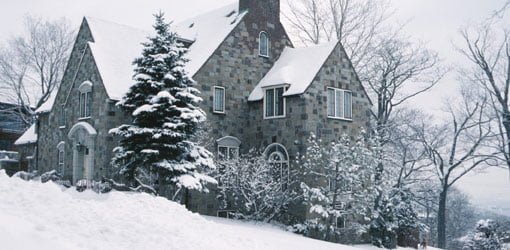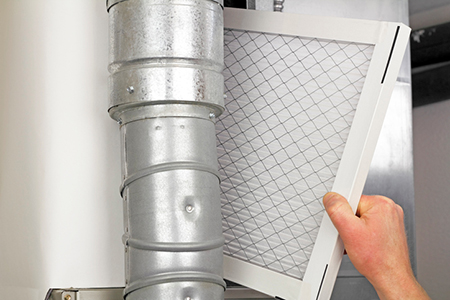How to Take Title - Different Forms of Real Estate Ownership
5 Types of Property Ownership – Which Is Best for You?
A lot of focus is placed on acquiring assets and security by advancing your career and making wise financial investments. However, what is often overlooked is how these assets are titled and the effect on your financial situation.
Unforeseen complications can arise when you have properties and assets titled in ways that create conflict within a family (who gets what or how much) or supersede provisions you make in your will. Also, significant tax benefits can be gained – or lost – depending on the characterization of your property.
In order to avoid complication, it’s prudent to be familiar with the different classifications of ownership.
Forms of Property Ownership
1. Sole Ownership
Sole ownership occurs when a single person owns a complete interest in a property or asset. Ownership is conveyed from one person to another through transfer documents, or by the laws of intestate succession. If the owner passes away, his or her interest in the property or the asset is included in the estate. Estate taxes and probate fees could diminish the value of that property if no other planning has taken place.
One positive is that the beneficiary of the property receives a full step-up in basis value. This means there will be no capital gain to worry about if the heir sells the asset because the heir receives the property at current market value.
For example, if a child inherits his or her parents’ Home when the current market value is $500,000, that child’s tax basis in the property will be $500,000, even if the parents’ basis was only $250,000 (meaning that the house was bought for $250,000). In this way, the child avoids capital gains of $250,000 if he or she sells. That said, the current market value of the home is included in the value of the deceased’s estate.
2. Joint Tenancy
Joint tenancy is when two or more persons share equal, undivided interests in property. Joint tenancy is not limited to spouses – anyone can share joint interests, but there is a tax benefit when this arrangement is shared only between husband and wife (qualified joint tenancy). When an asset is owned by spouses, the value of the deceased spouse’s property passes to the surviving spouse with no probate and no tax consequences. This is similar to the process of joint tenancy with rights of survivorship (JTWROS).
A joint property interest cannot be passed through traditional documents, such as a trust or a will. If one owner dies, then the ownership interest passes directly to the surviving owner.
However, when the owners are not married, the entire value of the property is included in the deceased’s estate. In addition, the property must go through the probate process. This can catch people off guard, and underscores why you need to learn about the different forms of ownership.
It is intuitive to think that only the deceased’s share of the assets would be included in the estate, but this is not the case if the asset is held in joint tenancy. As a result, other ownership forms must be utilized to minimize taxes and avoid probate. If you are not married to the person with whom you are planning to share joint ownership of an asset, then joint tenancy is likely not the best type of ownership for the assets.
3. Joint Tenancy With Rights of Survivorship (JTWROS)
Another form of co-ownership of property is joint tenancy with rights of survivorship. Joint tenants also have an undivided right to the enjoyment of the property. When a joint tenant dies, that person’s interest passes on to the remaining joint owners. However, while a joint tenant is alive, he or she can transfer interest to another person.
For example, a father leaves a vacation home to his three children, Tom, Sara, and David, with the house under a JTWROS ownership status between them. Tom dies first, and the home is now owned by Sara and David completely and equally. Tom’s interest does not pass to any heirs. When Sara dies, David owns the vacation home completely. The ownership interest passes without going through probate.
There a few different tax scenarios in JTWROS. Using the above example, as each person passes, other owners receive a step-up in value only on the deceased’s portion of the property. So if the owners sell the property, they will still have capital gains on their portion of the asset. This can have serious consequences in situations where the surviving owners decide to sell the asset.
4. Tenancy in Common
Tenants in common own an undivided interest in property between two or more people. However, unlike other forms of joint ownership, these interests can be owned in different percentages.
A tenant in common can pass his or her interest to others with traditional documents. However, the interest does not pass on to the other owners by law – meaning, if three people own a vacation home as tenants in common and one owner dies, that person’s ownership interest does not automatically pass on to the other owners. In addition, the deceased’s interests do go through probate, unlike JTWROS. This can cause problems if the other owners wish to put the property up for sale, as they will not be able to do so until the probate process is complete.
Once probate is finished, taxes are handled in the following manner: The deceased’s interest in the property goes to his or her heirs, and the heirs receive that interest at a stepped-up basis, or current market value. The value of the deceased’s interest is included in his or her estate. If the property is sold, then taxes will be based on the entire value of the property, which means that even though the owners can apportion their percentage of profit/loss on their tax returns, the IRS can come after everyone if just one owner does not pay his or her portion of taxes on the gain.
5. Community Property
Currently, 10 states have community property laws: Alaska, Arizona, California, Idaho, Louisiana, New Mexico, Nevada, Texas, Washington, and Wisconsin.
In a community property state, any assets or income obtained during a marriage are not owned solely by either spouse. It is considered part of the “community” of the marriage, and thus each spouse owns an equal share. Each spouse can choose to leave his or her share of the assets to one or more designated heirs upon death. There are no restrictions on how each spouse can give away his or her half of the community property (upon death), and there is no law requiring one person to leave his or her half to the surviving spouse.
For example, in his will, a remarried man could leave his part of the community property to his ex-wife, and there is nothing his current wife can do about it. However, if he wanted to convey ownership interest to his ex-wife or anyone else while he is still alive, he would need the consent of his current wife.
Or, if a man remarries in California, while he is alive he cannot transfer interest in his house or investments held jointly with his new spouse to his children mothered by his first wife. However, he can declare in his will to have his share transfer to his children when he dies. If his new wife does not want that to happen, she has little to no recourse to prevent it.
Moving to a new state that is not a community property state does not nullify the community property status, nor does separation. Legally, you are still married, and so the estranged spouse still has community property on any assets acquired. Divorce is the only thing that can sever any new assets from being included as community property.
Exceptions to the community property rules are property acquired prior to a new marriage (if in a community property state – this is separate property), property acquired as an individual prior to moving to a community property state, and property obtained via gift or inheritance during the marriage.
For estate purposes, the deceased’s share of community property is included in probate. If a stock portfolio is valued at $500,000, then $250,000 will be included in probate for the deceased spouse, though some states (such as California) have different rules.
The beneficiary of the property interest receives a stepped-up basis on that portion of the property. It is important to remember that the beneficiary can be chosen by the deceased – this is in contrast to joint tenancy (and JTWROS) under which the surviving joint tenant (or tenants) automatically inherit the interest of the deceased. As spouses, it is not necessary to write in a rights of survivorship clause.
Final Word
All too often, people do not understand the differences and ramifications of the various forms of ownership until it is too late to change them. For example, in an age where divorce rates are high and remarriage common, knowing that you are in a community property state is key. It’s also prudent to know which forms of property go through probate and which do not to avoid the complications and expense of probate. As you move down the road of life and build your assets, consult a professional to create a detailed, personalized plan that addresses your needs and eases the process of inheritance for your loved ones.
Do you own property? What type of ownership is it under?
-----------
Tom Stachler is a licensed Michigan Real Estate Broker selling property in the Saline, Ann Arbor, Ypsilanti, Dexter and surrounding communities. Please reach out to us today for additional real estate resources or properties both Residential, Income, Vacant or commercial realty types.












